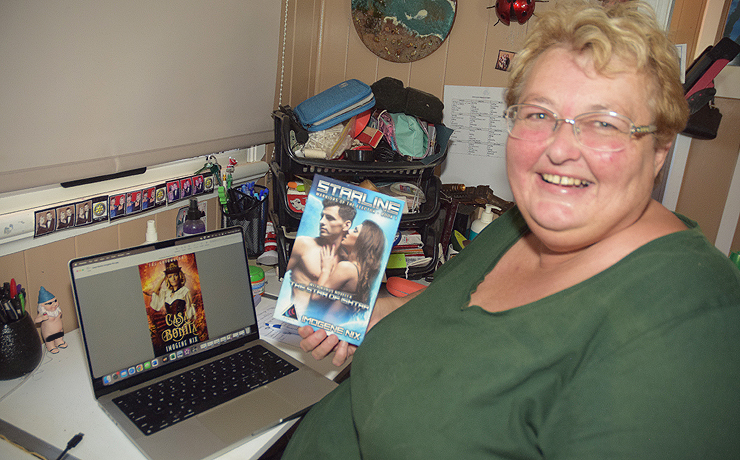
January 30, 2024
South Burnett author Nicola Pitt has enjoyed a stellar career as an author – after all, she’s published about 40 novels – but she very nearly enjoyed a lunar career as well.
If all had gone well, a Peregrine lander would have taken some of Nicola’s words to the moon earlier this month, or specifically to a geographical feature on the lunar surface known as the Gruithuisen Domes.
In 2021, American author Susan Kaye Quinn – who also just happens to be an aerospace engineer – bought a DHL Moonbox which had booked a ride on the Peregrine Mission 1 to the moon.
(Yes, DHL the courier company…)
The private Peregrine mission hoped to land the first US-built lunar lander on the Moon since NASA’s Apollo 17 in 1972.
Susan invited about 125 writers from around the world to submit an expression of interest about why their works should be included on a micro SD card hitched to the Peregrine lander.
The “Writers On The Moon” time capsule hoped to provide a snapshot of popular fiction to “reveal the humanity of today to the readers of tomorrow”.
Nicola – who publishes under the nom de plume Imogene Nix – submitted an EOI and was successful.
She sent digital copies of her “Warriors Of The Elector” series of science fiction novels – as well as some family photos – to Susan to be added to the payload.
There was then a long wait, as the Peregrine mission faced delays from its initial proposed launch date in 2022.
However, it was worth it, with Peregrine launching successfully from Cape Canaveral on January 8, carried on board the maiden flight of a Vulcan Centaur rocket.
In the South Burnett, Nicola was receiving updates as the mission progressed.
The two solid rocket boosters separated from the vehicle successfully and the first and second stage engines fired as planned, putting the Centaur into a low Earth orbit.
The Peregrine lander – built by Astrobotic Technology – then successfully separated from the rocket to begin its planned 46-day trip to the moon.
About seven hours after the launch, Astrobotic reported a problem had prevented the lander from achieving “a stable sun-pointing orientation”, ie. to power its solar panels.
An unplanned manoeuvre corrected this and power began to be generated however it quickly became apparent that a propellant leak meant the lander was using more fuel than expected to keep it pointing in the right direction.
Astrobotic announced that Peregrine could no longer land on the Moon but hoped it could continue to operate as a spacecraft in a highly elliptical orbit around Earth.
However, six days into the mission – and after consultations with NASA – Astrobotic decided to direct the spacecraft to burn up in Earth’s atmosphere to avoid creating risks to future spacecraft.
A controlled re-entry burn occurred last Thursday into the South Pacific.
Ironically, Peregrine’s last communication with Earth is believed to have been with the Deep Space Communication Complex in Canberra.
Nicola was obviously disappointed the mission was aborted but she was also elated it had actually made its way into space.
The Peregrine lander carried a number of commercial payloads – including NASA experiments and micro-rovers – as well as the Writers On The Moon micro SD card and other time capsules.
Controversially, also on board were the ashes and DNA from about 70 people, including Star Trek creator Gene Roddenberry and science fiction author Arthur C. Clarke.
External links:
- Writers On The Moon
- Peregrine 1 (NASA)

























I read this article three times and still have no idea what’s happened/happening.
A local author wrote some books. They were turned into a digital file, put on a micro memory card and (along with books by other authors and a whole lot of other stuff) was attached to a lunar lander (a spaceship that was going to land on the moon). The rocket took off, the lander achieved earth orbit safely but a fuel leak meant it could not make it to the moon. So, responsibly, the private company turned it around, and it burnt up in earth’s atmosphere.